The pandemic of the new coronavirus has affected many areas of our lives: the economy, education, culture, tourism. But it is the biggest test for the healthcare system, including the doctors who have been at the forefront of the fight against COVID-19 since day one.
Traditionally, there are more women among the workers involved in healthcare, and, respectively, they are more likely to catch the coronavirus at work. Besides, they have to deal with extreme stress caused not only by work but also by details: for example, wearing protective equipment, gloves, as well as the use of sanitizers harm the skin. During long work shifts in a stressful environment, personal protective equipment complicates the work, adding a psychological burden.
However, hygiene and self-care are things that should not be forgotten even in such conditions. That is why the UN Population Fund in Ukraine has prepared individual kits for medical workers. The kits include personal hygiene products for women, skin care products, and other useful things. In total, the Fund, seeking to facilitate the work of women in the healthcare system, provided kits to 27 hospitals from 5 regions of Ukraine and Kyiv.
We talked to women who work in hospitals and are involved in the fight against the pandemic, and here are their stories.
Maryana Zagarovska
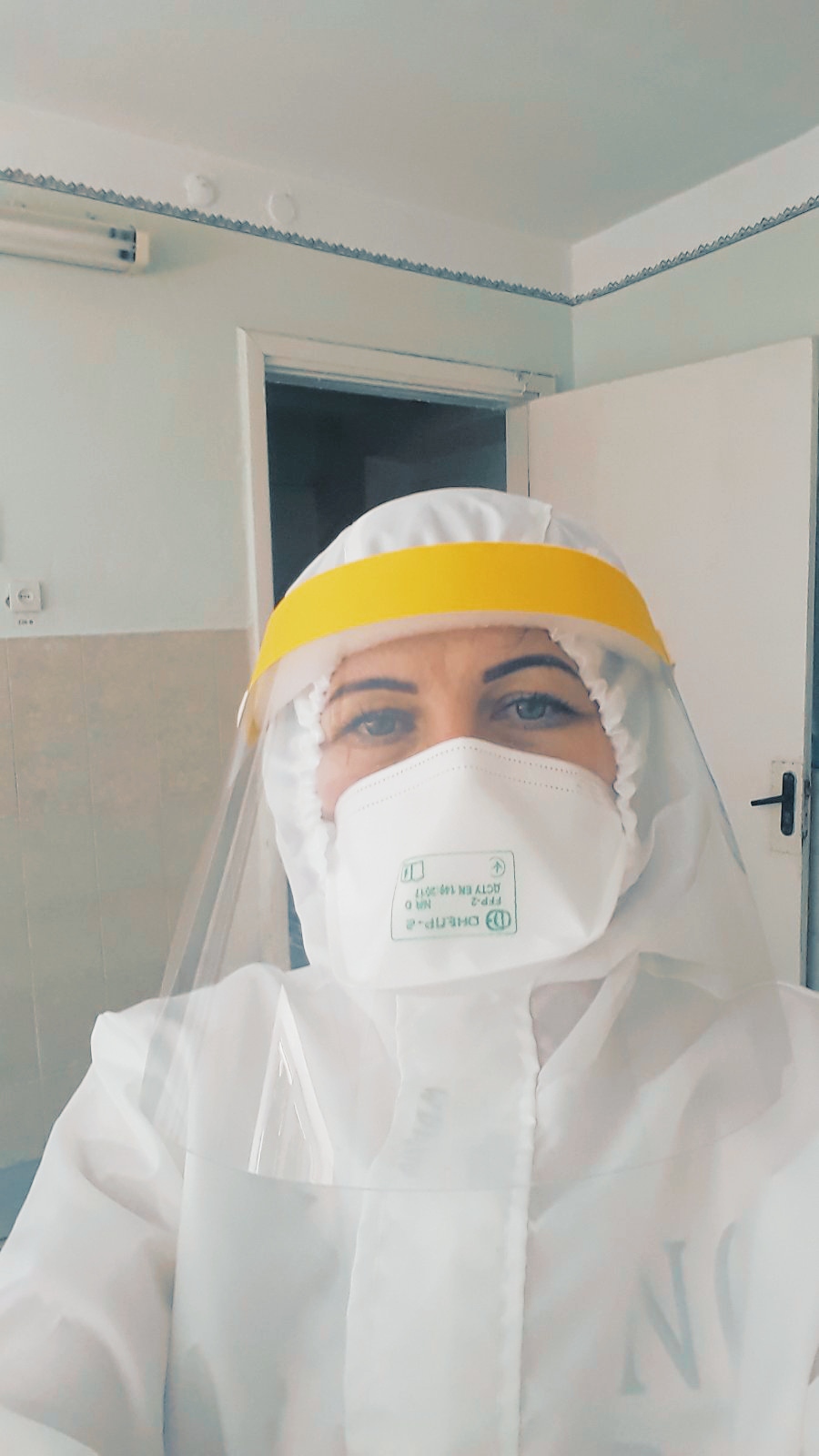
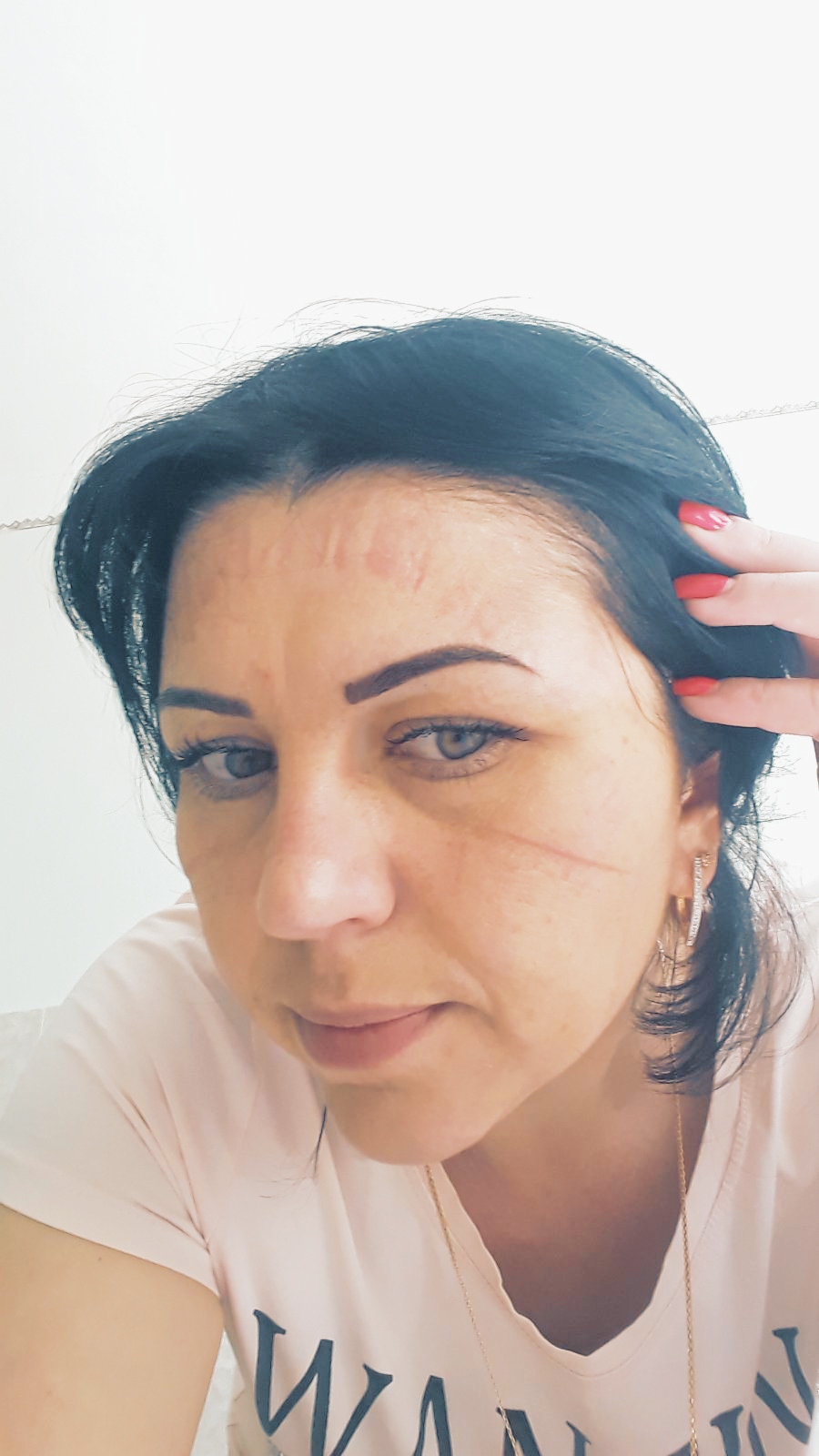
Maryana Zagarovska is a nurse on duty at the Horodenka Central District Hospital in the Ivano-Frankivsk Region. She works in the infectious diseases department, which opened in early March.
We talk to Maryana immediately after her shift. Her voice is tired, but she talks in detail about her work.
Maryana sighs when she speaks about the beginning of the pandemic. The infectious diseases department of the hospital had been closed till March when the department was opened and the staff of nurses on duty and junior nurses was recruited. Since March, Maryana and colleagues have had one doctor who is the head of the department.
In March and April, it was the only infectious disease department of the hospital, but, in May, it expanded, based on other departments: based on the pediatric department, neurological, therapeutic… A few weeks ago, the infectious department was also expanded to the fifth department.
Prykarpattia remains the leader in the number of COVID-19 cases. Areas of the Ivano-Frankivsk region are in the "orange" and "red" quarantine zones. At the end of August, Horodenka district is in the "red" zone. In total, more than 200 people died of coronavirus in the region.
Maryana says that in each department of the institution, there are nurses on duty, a post of on-duty and junior nurses, and a doctor - one for each department.
The number of patients is growing every day. Horodenka Hospital is a reference hospital - one of 11 in the region. Patients are also brought to this institution from neighboring districts: in particular, from Verkhovensky and Snyatynsky.
Many patients, according to Maryana, try to treat themselves at home, and then come to the hospital in critical condition - with saturation (oxygen saturation of the blood), which is below normal: 70-80% - although a healthy adult has it on the level of 95-100%. The day we were talking, two oxygen-dependent people arrived at Maryana's hospital.
As quarantine measures started to become loose, the number of patients increased. For example, in the Horodenka district in early July, an outbreak of COVID-19 was recorded because of a wedding. The more people ignore quarantine restrictions, the more work Maryana and her colleagues have.
The nurse says that in such a situation, you have to make choices, look for someone who can already be removed from the centralized oxygen, transferred to the concentrator. Maryana emphasizes once again that new patients are grave.
“It is very burdensome to work, psychologically”, says Maryana. “You see the real picture. You go into every ward, severe patients are in every ward, and by the end of the shift, you return home almost without any energy”, says the nurse. She comes home exhausted. Patients complain and want to be heard, and the medical staff tries to listen and provide support.
Maryana emphasizes that she is lucky: she has the support of her family. But it is still very challenging to work: both physically and morally. The staff is in PPEs around the clock, and the expenditure of suits is high.
Maryana even can name the most painful case in her work - July 31. In a tense voice, the nurse says that an elderly woman died that day. She was in severe condition since she had been treated at home for ten days. "The woman is dying in front of you, we resuscitated her for two hours, but she still died," Maryana said. “You understand that this is it. And there is nothing you can do. For our part, we did everything, we resuscitated the woman, but in front of your eyes, a woman just died”. But it is still not the end for the doctors - they need to support relatives. Although they saw and understood that the woman was in a severe condition, her relatives were still not ready for that. "It is hard to explain to them that their mother is dead," Maryana's voice breaks. She adds that there have been many deaths.
Maryana Zagarovskaya also overcame another challenge - isolation. Her office was in isolation for forty days: from March 31 to May 12. During this time, Maryana and her colleagues lived in the hospital without leaving the territory, eating in the hospital kitchen. All holidays, including Easter, the medical staff stayed within the walls of the medical institution. Doctors, especially women, face difficulties in taking proper care of themselves during a pandemic. Suits, gloves, masks - they all harm the skin. The United Nations Population Fund has prepared special hygiene kits for doctors battling COVID-19, important, but often forgotten details.
It is hard for Maryana to talk about death. She says it is very difficult to observe, but her offices, like all others, continue to operate.
Silva Yastremska
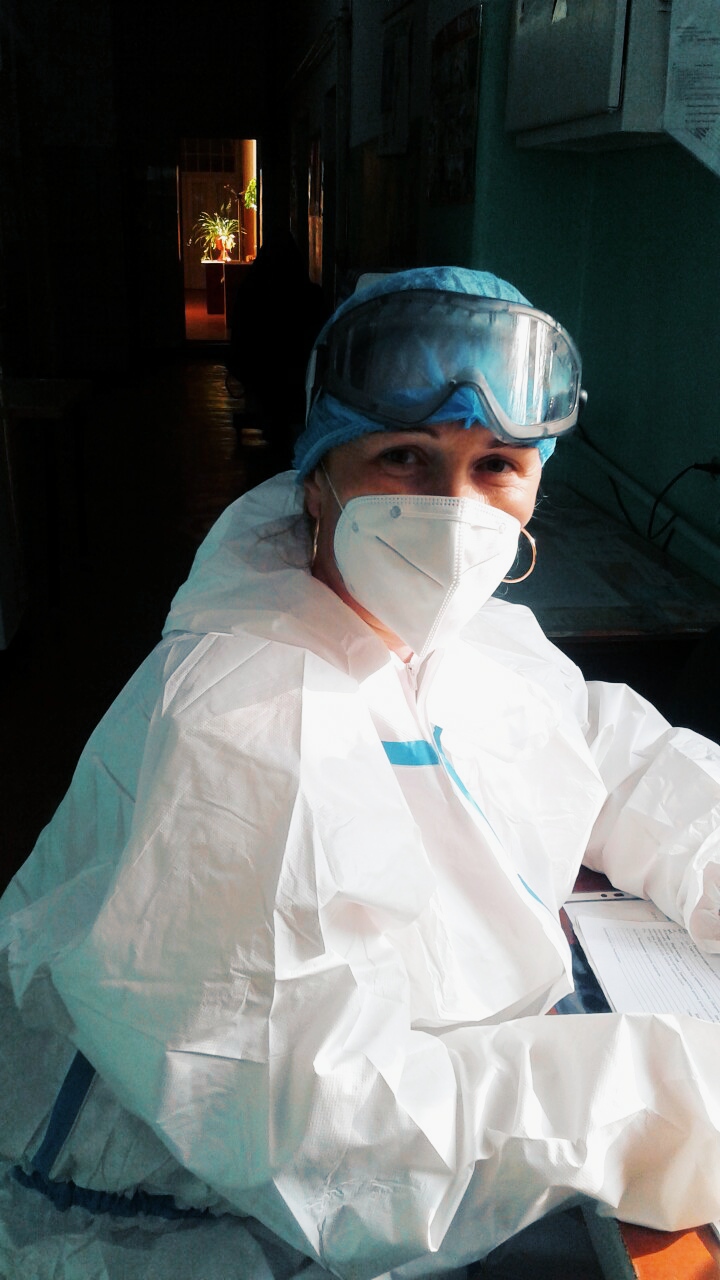
Silva Yastremska works in Chernivtsi, in the infectious department of the regional clinical hospital. She is a nurse, so she is responsible for carrying out the doctor's prescription, conducting all manipulations.
The Chernivtsi region is almost completely in the "red" quarantine zone. Since the beginning of the coronavirus pandemic, as soon as it reached Ukraine, Chernivtsi and the region are in the lead in the number of cases. At the beginning of September in this western region, there are more than 11 thousand cases. The Infectious Diseases Department of the Chernivtsi Regional Hospital has been receiving moderate and severe patients from the very beginning.
In the department where Silva works, there is no ventilator, direct oxygen is used instead. Patients who need additional oxygen are sent to the intensive care unit.
It is hard to work, says Silva. “There are a lot of patients and very few of us. The patients are serious - it has become very challenging to work,” the nurse sighs.
The woman has been facing the pandemic from the first patient who got to the hospital at the end of February - the beginning of March. Silva says that the first patient came on her shift. April was a difficult month because there was a peak. "There were those who were sent to the intensive care unit, there were those who died," says Silva.
In addition to the residents of Chernivtsi and the region, many doctors fell ill. When there were a couple of nurses left, they worked, alternating days. Fortunately, Silva herself was not infected with COVID-19. Staff is provided with personal protective equipment, although initially there were not enough PPEs. But now, says Silva, equipment: costumes, masks, and respirators - are issued smoothly. Not only authorities but also international organizations helped. The United Nations Population Fund in Ukraine assisted the hospital where Silva works: kits with hygiene products that should make life easier for women at the forefront of COVID-19.
When asked when it was more difficult: now or at the beginning of the pandemic - the nurse says that now the situation is similar to how it was in April. In June, it became a little easier, but in mid-summer, many people got to the hospital, including severe patients.
Silva has been working at the forefront of the fight against coronavirus for six months. It is not so burdensome to perform physically, as the tasks are pretty regular for the nurses, but psychologically it is very tough. Patients often have complaints, the situation with medicines is also controversial: sometimes the hospital is provided with enough medicines, sometimes they are not.
"I understand patients: they are people who are ill. But I told them, "Understand me, the healthy one, because it is extremely difficult for me, too”. There are many of them, and I am alone”.
Silva sees the reasons for the increase in new cases in the markets, cafes, bars, and restaurant reopenings. People, according to the nurse, just do not understand what a coronavirus pandemic is. Silva says that people are very far from the situation: it seems to them that the virus will not affect them.
"I told them, 'Come to us, you do not even have to work'. Just sit on a chair for a day in those PPEs, feel the conditions”. And then they will see that it (pandemic - ed.)", - the nurse says. She often notices that people consider it "politics".
Silva loves her job but admits that psychological stress is difficult to withstand. The nurse reminds everyone to keep the distance from each other. Silva is worried that people are once again actively attending mass events, forgetting about the restriction. The woman has a child who went to the tenth grade, but the fact that the children are back to school, as well as the fact that people do not pay attention to the rules anymore, makes Silva confused and insecure.
"I do not know what will happen next. I want to tell people to follow the rules because COVID-19 is a very severe disease”, adds Silva Yastremska.
Natalia Kostina
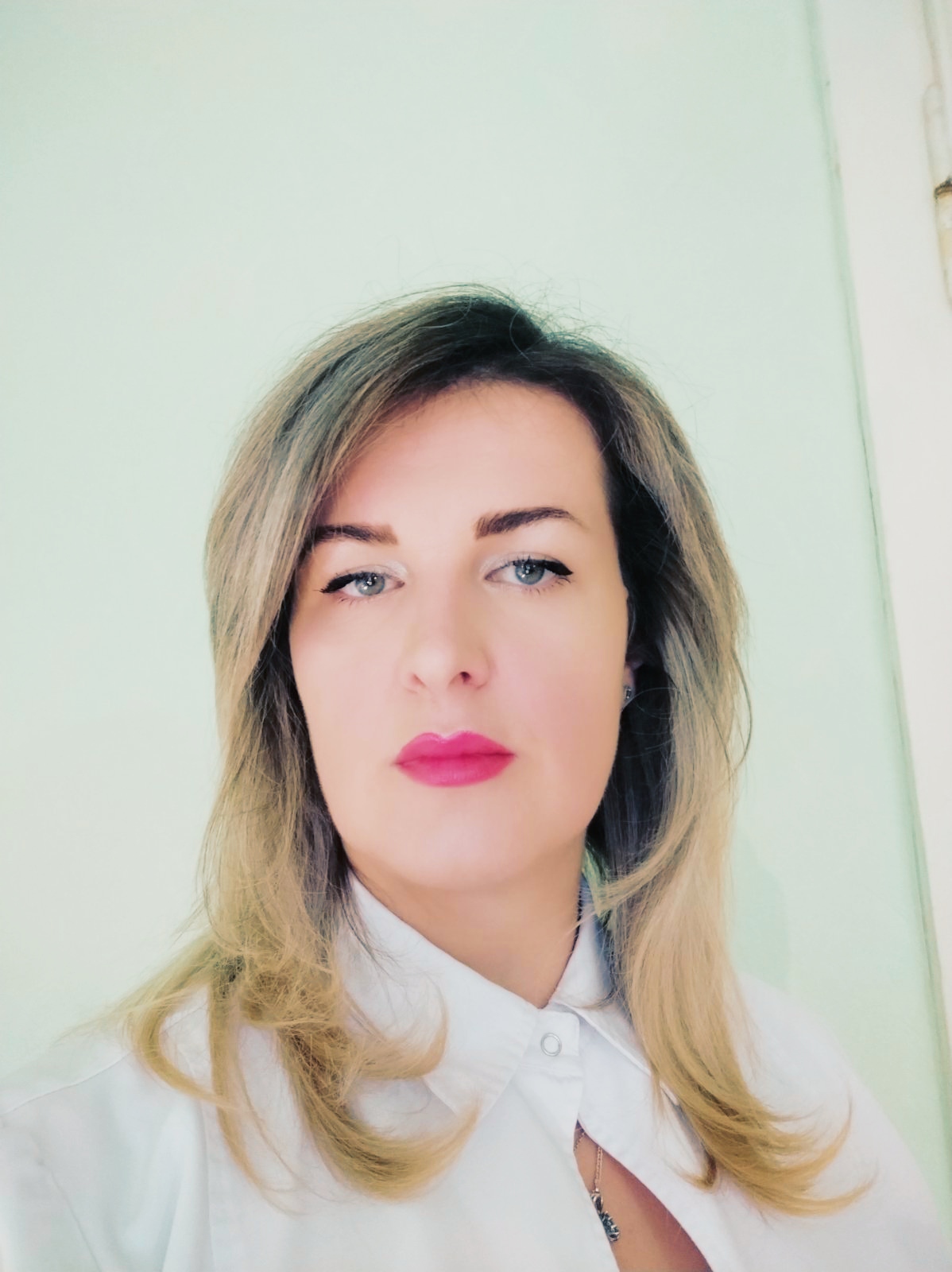
She is a doctor in the infectious diseases department of the regional clinical hospital in Chernivtsi. Her hospital and department have been accepting moderate and severe patients with COVID-19 since the beginning of the coronavirus pandemic in Ukraine.
The first case of coronavirus in Ukraine was discovered in Chernivtsi. It happened in late February. Since then, the Chernivtsi region remains the leader in the number of cases of COVID-19 and is almost completely in the "red" zone.
“Our battle with coronavirus infection started with the first patient who came to us on February 29, 2020. And on March 3, the confirmation came: he had COVID-19. And since then our working days have started”, says Natalia.
Natalia has been fighting against the pandemic since the first case. She has been working with COVID-19 for more than six months. Natalia and her colleagues are provided with protective equipment, but many health workers in the Chernivtsi region got infected with the coronavirus: as of mid-August, 820 health care workers in the Chernivtsi region became infected with the coronavirus.
Chernivtsi, especially at the beginning of the pandemic, received a lot of media attention. Various media outlets filmed and wrote about the hospital where Natalia works. She became the heroine of reports because she was one of the first to meet the coronavirus in Ukraine.
In early April, says Natalia, there were fewer patients, but since mid-April and up to now, many people get to the hospital. When asked if there were more cases at the end of the summer, the doctor said that there were indeed more new patients. She adds that almost the entire department of the hospital is full.
Natalia does not think that it is possible to talk about improving the situation. On the day of our conversation, Ukraine crossed the 100,000 cases mark, and in just a few weeks, nearly 3,000 new cases a day have become the norm for the country.
There were more than a hundred places in the hospital for coronavirus patients, most of which were occupied at the time of our conversation.
“In my opinion, people are now paying less attention to quarantine measures. I was at the Kalyniv Bazaar in Chernivtsi, about a week ago. Of all the people at the market, I was the only one to wear a mask”, says Natalia about the reasons for the increase in the number of new cases.
The doctor urges everyone to follow the rules of quarantine, rules of general and personal hygiene and asks not to forget to wash your hands thoroughly and keep your distance. Natalia wants everyone not to get ill and stay healthy.
Natalia Dyomina
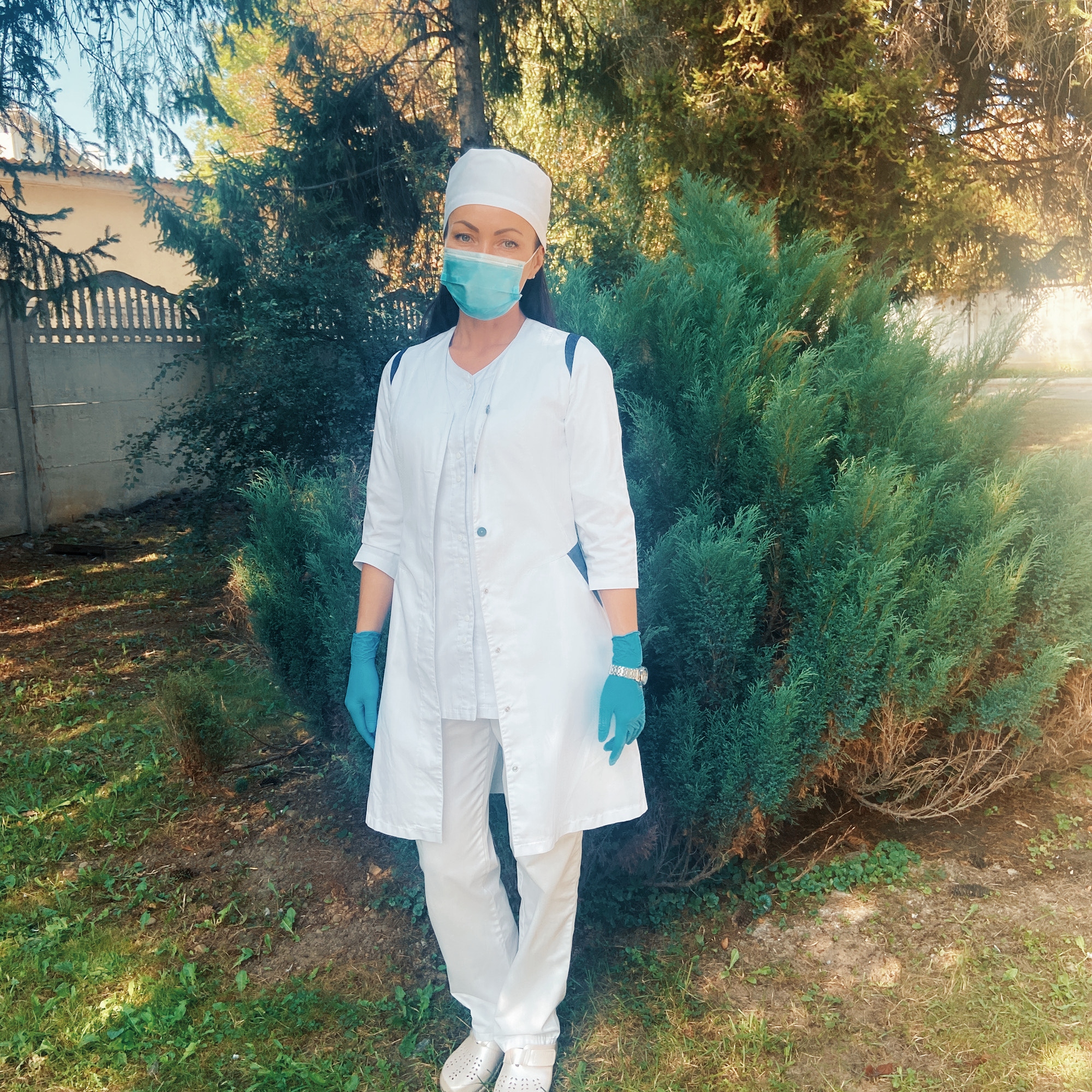
Natalia Dyomina is a Deputy General Director of the Ivano-Frankivsk Regional Clinical Hospital of the Ivano-Frankivsk Regional Council. We talk to her on the phone while she goes to her office. In parallel with our conversation, she solves a lot of work issues.
In addition to the work at the hospital, Natalia is also involved in the headquarters to combat the COVID-19 at the Ivano-Frankivsk Regional State Administration. She is also the Chief Part-time Expert on HIV and AIDS at the Department of Health of the Ivano-Frankivsk Regional State Administration.
Ivano-Frankivsk, together with Kolomyia, Kalush, and some other districts of the region, is in the "red" zone. Ivano-Frankivsk, as a regional center, has the largest number of patients in comparison with other towns and districts of the region.
The institution where Natalia works was the first to be involved in the fight against coronavirus in the region - it was identified as a reference hospital. "We were the first to work with the first patients with COVID-19 in March", says Natalia.
After that, from the end of March, she was involved in the headquarters, which analyzed the spread of the disease. Also, at the office, Natalia tracked the situation with the logistics of PPEs, ventilators, and other necessary things in the battle against the pandemic.
In April, the number of patients increased - and also, many people quit their jobs in the hospital. They resigned, says Natalia, for various reasons, not always because of the coronavirus.
“We decided with the chief doctor that I would return to work at the hospital, I would work with the medical staff. It was necessary to support the team”, says Natalia. The decision was agreed with the head of the regional state administration, so she continued to work in the headquarters only part-time, in the afternoon. Most of the time the doctor spent on patients with COVID-19.
Natalia does not examine all patients, but as the Deputy General Director, she has to make important decisions, including for critically ill patients - for example, about the change in treatment tactics. There is also a lot of work on cooperation with the National Health Insurance Fund.
Natalia also says that patrons contacted the hospital to help. Ivano-Frankivsk Hospital received assistance from volunteers and organizations. Both ordinary Frankivsk residents and large organizations, in particular, the United Nations Population Fund in Ukraine, offered their help to the hospital. The foundation provided personal hygiene products for women, skincare products, and other tools that facilitate the work in extremely difficult conditions.
Natalia Dyomina also talks about the organizational side of the hospital during the pandemic. The money allocated by the National Health Insurance Fund is not enough to pay salaries to staff and to cover expenses on medicines, Natalia says. “Since March, we have been working as a mono-profile institution. We only accept patients with COVID-19. We do not take other patients with infectious diseases, so we do not have enough money for wages and medicines”, says Natalia about the financial side of the work.
The hospital plans to purchase and install an oxygen station. This process requires a lot of work and communication with the authorities from the management of the institution. But first of all, the hospital deals with patients, and, as the woman admits, it is becoming increasingly difficult. On Friday, when we talk, the hospital is full, even a few patients more than the staff can accept - Natalia says that this is usual for this day of the week. There are 130 beds and 138 patients. Intensive care is also full, and there is a lack of staff.
It is difficult for Natalia even to speak. The heat, the equipment - people are falling off their feet. "I just walked around the wards, came out of the intensive care unit - and I am terribly tired," - concludes the doctor.


